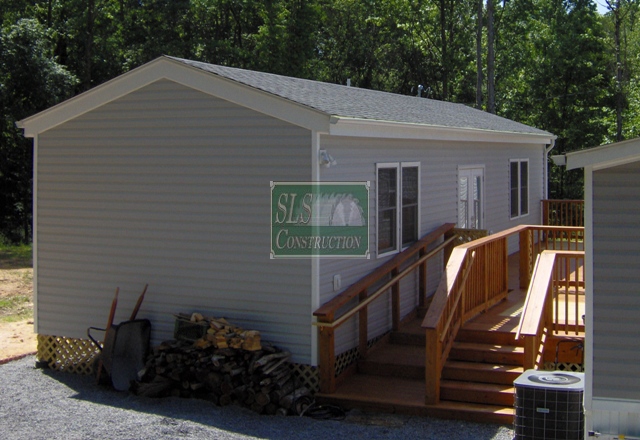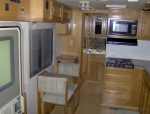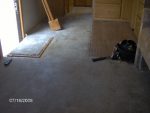 With todays hustle & bustle, I can see the allure for many for downsizing & jumping on the “Tiny Home” craze. While many might consider this a new movement, there have been versions of it before, along with many lessons one can learn from them. Having worked on many of these why not take a look at some items you might wish to consider & lessons learned.
With todays hustle & bustle, I can see the allure for many for downsizing & jumping on the “Tiny Home” craze. While many might consider this a new movement, there have been versions of it before, along with many lessons one can learn from them. Having worked on many of these why not take a look at some items you might wish to consider & lessons learned.
What’s in a name?
So what is in a name, aka what does “Tiny Home” really mean? Well one of the interesting things I have seen watching this movement grow is how the size has started to creep up. What used to be under 200 SF, it is now sitting at under 400 SF. The other interesting thing is what was once easily towable, is now giving way to busses, places built on top of a garage, on set foundations, etc… Shoot who knew, I guess I built one of the first duplexed tiny homes…
With that, my take is a tiny home is one that is easily moveable which would also put it around 200 SF or less. If you are converting a bus, sorry but that would be considered more of an RV or bus conversion. Built in place / fixed foundation, that would be considered more of a cottage or cabin.
Code Compliance:
 One reason why under 200 SF seems to be a popular number is because many of the codes (2015 – R105.2 Work exempt from permit) have language that reads:
One reason why under 200 SF seems to be a popular number is because many of the codes (2015 – R105.2 Work exempt from permit) have language that reads:
Permits shall not be required for the following: 1. One-story detached accessory structures, provided that the floor area does not exceed 200 square feet…
In many cases, many believes this excludes permits from being pulled for said tiny houses. In reality it was meant for sheds mainly, but some locals will also count a “tiny house” as such &/or you maybe in an area where codes are not enforced. With that, there are additional ones that may come in play like the “mobile home” version & also DOT’s if you plan on transporting it. It is always best to check around first
HERS Ratings:
Let’s say you would like to “rate” your tiny home – be prepared, you can’t rate anything under a 190 SF and getting to say a HERS 52-55 (IECC Compliance) is a lot tougher the smaller the house is.
Can you really live in one?
 Watching some of these shows can leave one just shaking their heads, going where is the “where are they now” version? With that who cares if someone else does it, the question is can you not only do it, but love it? The easiest way to find out is to do a test run – find one for rent, or maybe try out a small cabin / RV or something similar for a week, two, or better yet even longer. While you are doing that, make notes of what works, doesn’t work, clever uses for space that they utilized, what you liked & what you couldn’t stand, etc… For example I was living in an RV for over 5 months before our new place was ready – overall it was fine except for trying to use that small shower.
Watching some of these shows can leave one just shaking their heads, going where is the “where are they now” version? With that who cares if someone else does it, the question is can you not only do it, but love it? The easiest way to find out is to do a test run – find one for rent, or maybe try out a small cabin / RV or something similar for a week, two, or better yet even longer. While you are doing that, make notes of what works, doesn’t work, clever uses for space that they utilized, what you liked & what you couldn’t stand, etc… For example I was living in an RV for over 5 months before our new place was ready – overall it was fine except for trying to use that small shower.
Choose your trailer wisely:
Assuming you are going with a movable version – you need to make sure that not only can the trailer handle the weight of the building, but also all the furniture & other items one has. If I had to stress one item it is weight – it truly plays a large factor, especially when you consider; just how are you going to move it? Most smaller size SUV’s & smaller cars won’t be able to safely move a smaller trailer much less one fully loaded down.
Moving past that, there are numerous trailer options out there from single to triple axles along with regular trailer hitch style to 5th wheel versions. Axle’s – the more axles, the more weight it can handle & the easier you can move it. Ever tried backing up a single versus a double axle trailer – well you know which is easier. If I was choosing I would opt more for a 5th wheel style with a minimum of 2 axles. I would use the place over the 5th wheel as my loft, leaving the rest for the main living area.
Trailer Weight Distribution:
No matter what you need to make sure the weight is distributed equally from side to side and also front to back. 10 to 15% of the trailer weight should be concentrated on the hitch (up to 25% for 5th wheels) which means heavier items are forward of the axles. A general rule of thumb is 60% should be forward of the axles – the rest over & behind. You also want to make sure you don’t create a structure that is top heavy (not only for towing, but also for normal living) to prevent tipping it over. If you are going with a regular style trailer you may want to invest in a weight distribution & sway control mechanism. If in doubt make your refer to your tow vehicles recommendations & do not exceed it’s GVWR.
Framing:
I got to say I am amazed at how many people frame there tiny homes just like a regular one. In all reality you don’t need to use regular 2×4’s – wouldn’t it be better to save some weight by maybe going with steel (like RV’s) or maybe saving space by using 2×3’s like older mobile homes? One other trick is to simply rip down your top & bottom plates to 3″, and turn a 2×4 stud sideways. and offset the interior & exterior ones 24″ OC. You can then fill the cavities with 1.5″ foam boards giving you an R9 where the studs are and an R15 where they aren’t.
Insulation:
Insulating your tiny home is really important, not only to help you feel more comfortable but to keep your power / gas bills down. While many like to go as cheap as possible, this is one area where it can bite you – do you really want to be frying in your loft or resting comfortably if it is parked in the sun? How about trying to relax and watch the snow falling as your are wrapped up in blankets with the small electric heater failing to keep up?
Whether you are using a shipping container or a stick built house – look for a product that will give you the best performance & make sure it is installed properly. In most cases that is going to be closed cell foam (using a primer for shipping containers) or closed cell foam boards. One other nice item with sprayed foam is it does add to the structural stability. Does this mean that fiberglass or other products should not be used? No, but if used, make sure they are installed properly.
Roofing:
Can it really get any easier than this – but metal roofing is the way to go. Not only is it the lightest option, but it also is one which stands up to the wind better. You should even consider utilizing a “cool-roofing” style product. Just like above, sure you can use cedar or shingles, but there are some trade-offs like weight & maintenance you need to consider.
Flooring:
 Most people tend to think that all you can normally use is carpet or linoleum, but there is nothing that says you can’t use slate, marble, or even ceramic tile for your flooring. With that said you need to consider not only the weight, but also make sure you have taken care of any flex issues. In the case of this RV I simply replaced the carpet with a floating hardwood laminate floor (which you can see the final product above).
Most people tend to think that all you can normally use is carpet or linoleum, but there is nothing that says you can’t use slate, marble, or even ceramic tile for your flooring. With that said you need to consider not only the weight, but also make sure you have taken care of any flex issues. In the case of this RV I simply replaced the carpet with a floating hardwood laminate floor (which you can see the final product above).
Wall Coverings:
In most cases people tend to opt for a lightweight cedar siding on the exterior & sometimes even the interior (or sometimes even wood paneling). There is nothing wrong with those choices (just make sure you used a proper WRB.) But what happens if you want drywall or something else? Go for it – just remember to make sure the details are done right to prevent not only water getting in, but also to ensure it stays on / doesn’t crack when moving. If you are going with the offset framing we mentioned above, you could save a ton of weight & 1/2″ of interior space by utilizing 1/4″ drywall instead of 1/2″ – just a thought.
Power:
One of the most overlooked items I see is just where are they getting there power from. While it is great that you can move the house wherever you want, just how are you supposed to do anything in it? Granted you can use portable propane tanks for the stove, heat & hot water but… While a generator is always an option, no one wants to have that running all the time & the supposed savings from living tiny will be burnt through pretty quickly. Considering a battery bank, you still need a way to charge it, they won’t last long (especially if using for refrigerator, AC, etc…) and they are heavy.
Lets say you can plug in – say at a friends house or a campground, well, you are probably going to be limited to a 30 or 50 amp service (or worse just an extension cord). Just remember the less you consume (for example using LED for lighting) the less you need to pull or produce. For options beyond “plugging in” – Going Off Grid Series.
Water:
Amazingly, this aspect is mentioned a few times but it is generally all based on rain water collection in places with a ton of rain. Skipping past the issues & how to’s listed above, you need to figure out if you will always have access to a hose pipe for water supply, or are going to transport & store some. No matter which option you choose you do have to make sure you can prevent freezing. If you are going with a storage solution, you also have two other issues to consider like weight & space. For example – 50 gallons will take up more than 3′ X 1.5′ x 1.5′ worth of space & when full will weigh over 415 pounds.
Got a hose pipe you can connect to? Great make sure you use a proper hose for it which you can at most RV or camping supply locations. You may also want to connect a filter to it to also help deal with any items in the water supply you might not like. No matter if you are going with a storage supply or hose supplied try to keep your use done (i.e. consider going with Water Sense fixtures.)
Hot Water:
Nothing beats a hot shower, but how? While you can go with a tank style system, you run into the issues listed above (space & weight.) That is one reason why many go with an on-demand type of system. You generally have two options – electrical or gas. Either has trade offs – are you utilizing propane (you have to fill the tanks / hook-up, etc…) or electric (you might have to turn off the AC to let it run) and has to be considered up front. The less hot water you pull the less power or propane is needed.
Waste:
Besides trash, one of the other items most overlooked is how do you handle that other waste generated from above & well… from you? Do you have direct access to a septic clean out that runs to the sewer or septic system or do you need to use a storage tank? Fortunately the do have portable storage tanks but that can be a mess to move. Have a permanent storage tank, well you have to move the house every time.
Maybe you can utilize gray water (sinks, shower) to help water your friends trees but that still leaves the black water. That essentially leaves one with a composting toilet or an incinerating style. Both have unique needs, pros, cons & ways of cleaning so do your research…
Use of Space / Other Ideas:
- Remember that test drive I mentioned above? Well that is a great idea along with going to RV shows to see how they utilize almost every inch for storage.
- Forget your days of buying bulk as you probably won’t have the room. The same goes for leaving items in their original packaging. Most people have storage containers for almost everything & place bought items directly into them. Or in the case of cereal taking the bag out & using a clip.
- Stop by a library / check out online – tips from Good Sam’s Club & others on Full Time RV’ing – the original tiny home pioneers
- Check out pieces on log homes, back packing, house boat / cabin / cottage living – many will have some great storage tips, design ideas, and other tips
